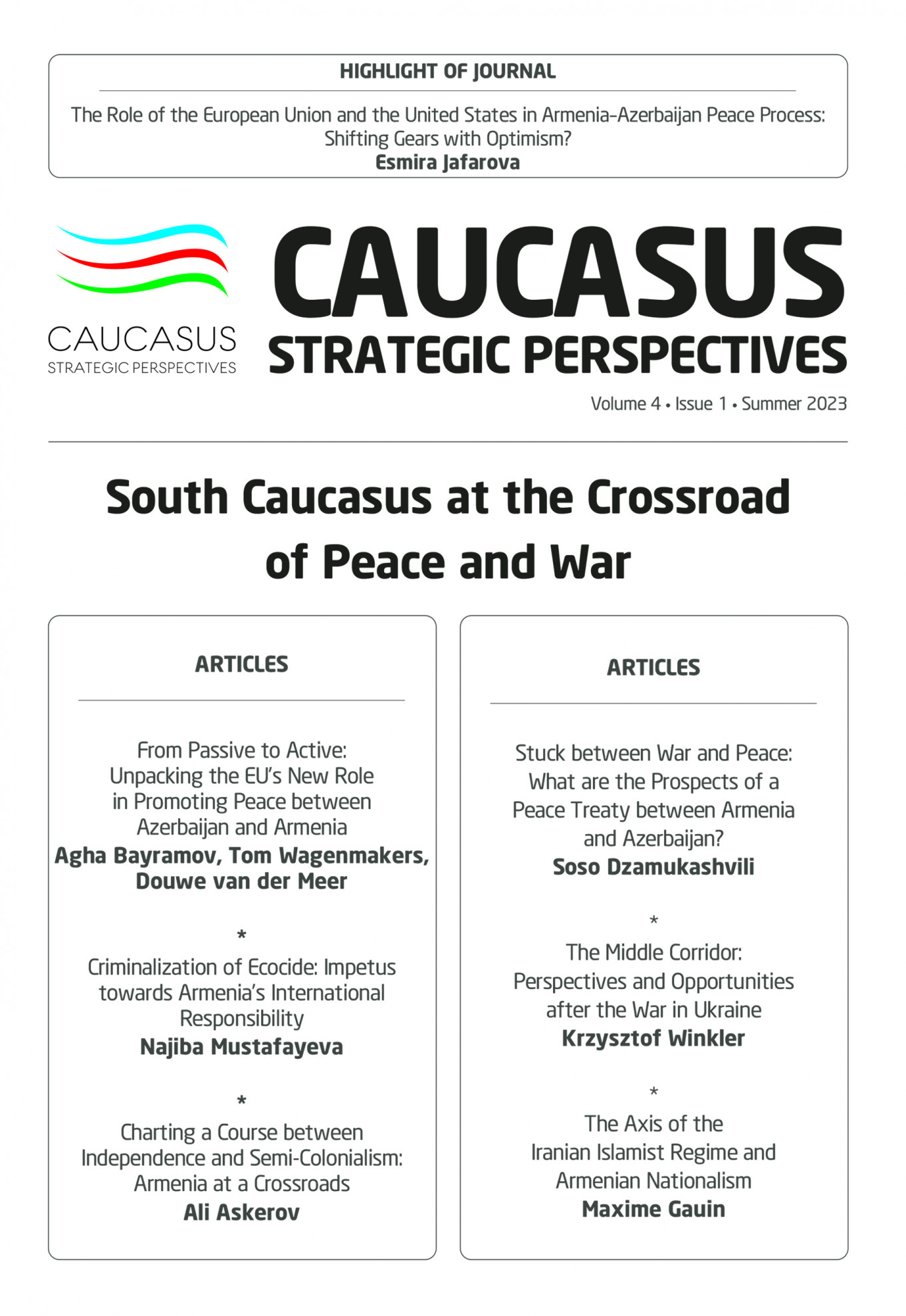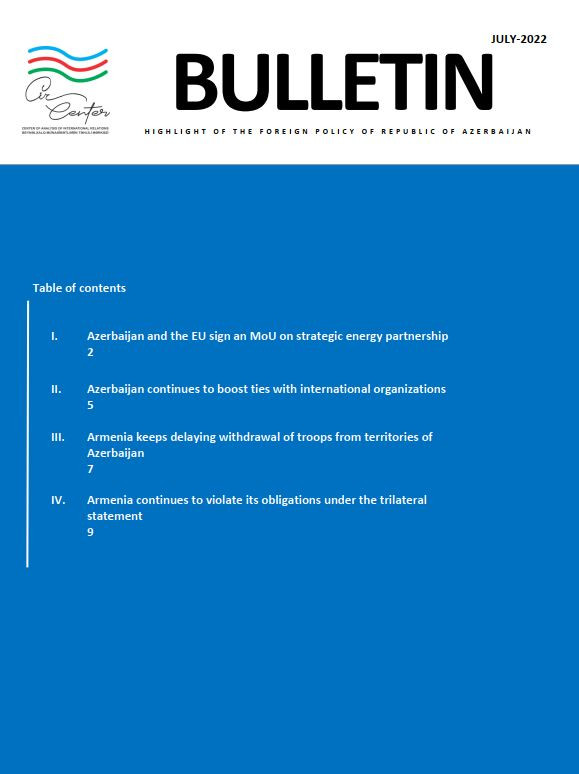The armed confrontation between Armenia and Azerbaijan that began after the large-scale provocations of Armenia along the entire front on September 27 still continues. In response to the Armenian attacks, Azerbaijan’s army launched a counter-offensive operation along the entire front. As a result of continuation of this operation, as of October 21, Azerbaijan has liberated 115 villages, 3 cities and 2 settlement that were occupied by Armenia for about 30 years. Despite the heavy losses of military personnel and equipment, Armenia is not willing to leave the occupied territories of Azerbaijan peacefully.
Armenia even grossly violated the ceasefire agreement that was reached by the Ministries of Foreign Affairs of both sides on October 10 and October 17. Instead of complying with the UN Security Council resolutions (822, 853, 874 and 884), which call for the withdrawal of the occupying forces from all the occupied territories of Azerbaijan, Armenia attacks civilian objects in frontline settlements and in other settlements which are far from the conflict zone including Ganja, the second biggest city of Azerbaijan. Armenian armed forces twice struck civilian buildings in Ganja with heavy missiles, which led to deaths of more than 20 civilians, including childre
On Oct 17, the General Prosecutors of Azerbaijan officially claimed that 13 civilians were killed, including two children, and more than 40 others injured, after the Armenian army struck Azerbaijan’s second-largest city, Ganja, with missile attacks. Photo courtesy : Hurriyet Daily News
However, the continuation of armed confrontation creates not only humanitarian issues and political instability in Armenia, but also financial problems. As military expenses are rapidly increasing, it negatively affects the economy of Armenia which has already severely suffered from pandemic related issues. Just in first 4 days of armed confrantation, Armenia lost the military equipment and ammunition worth more than 1.2 billion US dollars.
Due to increasing military exspenses and economic problems, Armenian government submitted a bill on making changes and amendments to the Law on the 2020 State Budget in early October. After the submission, on October 5, the standing committee on financial-credit and budgetary affairs of Armenian Parliament approved the bill. It is the second official accepted amendment to 2020 state Budget. According to new amendments, due to the ongoing military operations, budget expenditures will be increased by $84 million. As a result, total volume of budget expenditures will reach $3.44 billion or 26.5% of the Gross Domestic Product (GDP).
Weakened economic activity also negatively affects tax revenues. According to new predictions of Armenian government, until the end of the year, tax revenues will reach $2.77 billion, which is $236.67 million less than the amount of tax revenues predicted in April. Reduction of tax revenues will also lead to a reduction of general budget revenues, about $590 million or 17.5% compared to the initial predictions of state budget of 2020.
As budget expenses expand and budget revenues decrease, the budget deficit significantly widens. After the first amendments to the state budget in April, it was expected that the budget deficit will double and reach $670 million. According to new predictions, the budget deficit of Armenia will triple and reach $963.9 million or 7.4% of GDP until the end of the year. Such huge increase in budget deficit will create essential financial problems, as during a period of weak economic activity it is hard for the government to finance financial deficit. Even economic laws of Armenia do not allow the budget deficit to reach this level, as it is dangerous in terms of financial security. So, Armenian government has activated the escape clause in its Fiscal Rule after the first amendments to the state budget in April.
Increasing budget deficit in turn necessitates attraction of foreign debt which has become the main economic problem for Armenia. As Armenia does not have free financial resources, capacity of its economy is restricted and depends on foreign remittances for solving financial problems it has to attract foreign debt. After the first amendments to the state budget in April, the Armenian government planned to attract about $532.3 million for the financing of the budget deficit and support programs. This would result in a 7.26% increase in public debt and 9.2% increase in foreign debt. However, after the recent changes for the financing of the increased budget deficit, Armenian government has to attract additional $825 million. The attraction of these funds will result in increase of public debt by about 18.5% compared to 2019.
It is worth to note that in Armenia, demand for foreign debt exceeds the expectations of the government. For example, even though Armenian government predicted the need for $523.3 million of foreign debt in April, according to statistical numbers between April and August, foreign debt of Armenia increased by about $700 million. It shows that even before the armed confrontation started, demand for foreign funds was higher than the expectations. So, we can assume that the armed confrontation will necessitate attraction of more foreign debt than the government expects.
Simultaneously, rapid growth of public debt deteriorates Debt to GDP ratio. In recent years in Armenia this ratio has been increasing and reached 50% in 2019. With the new levels of public debt, this ratio will reach an even more dangerous level. Based on the new predictions of the government, Debt to GDP ratio will reach 67%, passing the 60% threshold. As a one of the main indicators of financial security, the high level of Debt to GDP ratio increases the risks of default of government on financial obligations.
Weak economic activity and financial problems also affect the level of GDP. Despite the fact that Armenian government predicted only 2% decrease in April, it lowered its predictions to -5% in August and to -6.8% in October. Therefore, in the end of year the level of the GDP will be about $1.57 billion less compared to the initial predictions. On the other hand, because of the armed confrontation, the national currency of Armenia is depreciating which also diminishes the level of GDP in terms of US dollar.
Economic situation in Armenia also negatively affects its international ratings. In its recent revision of Armenia’s Long-Term Foreign-Currency Issuer Default Rating, Fitch Ratings downgraded its rating to ‘B+’ from ‘BB-’. According to Fitch Ratings, the main problems that are negatively affecting the rating of Armenia are the high and growing net external debt, large structural current account deficit, a reliance on remittances, weak FDI inflows and the armed confrontation with Azerbaijan. Lower ratings will reduce the volume of Foreign Direct Investments and will eliminate the opportunities to borrow foreign debt with favorable conditions.
All these negative economic trends show that in coming years Armenia will be faced with substantial financial problems. As the armed confrontation is continuing and the number of daily COVİD-19 infections increase, theeconomic and social situation worsens. Inability of the Armenian government to manage the financial problems independently, with its own financial resources induces it to attract additional foreign debt. Excessive borrowing in turn increases the risks of default on financial obligations, which could have catastrophic results for the Armenian economy. Therefore, “Repay the debt by new debt” approach of Armenia that kept its economy alive for many years will probably fail this time, as the high-level public debt, continuation of the armed confrontation with Azerbaijan and deficiency of free financial resources globally will eliminate the debt attraction opportunities. This will lead to severe economic and social problems and will destabilize the political environment in Armenia.








